Search results for null
Books
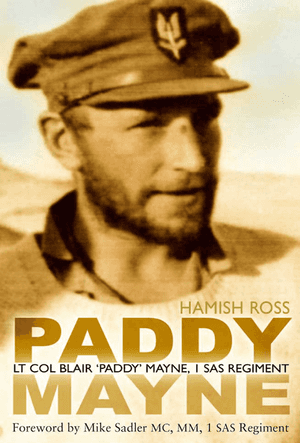
Paddy Mayne
Hamish Ross
‘Paddy’ Mayne was one of the most outstanding special forces leaders of the Second World War. Hamish Ross’s authoritative study follows Mayne from solicitor and rugby international to troop commander in the Commandos and then the SAS, whose leader he later became and whose annals he graced, winning the DSO and three bars, the Croix de Guerre and the Légion d’Honneur.
Mayne’s achievements attracted attention, and after his early death legends emerged, based largely on anecdote and assertion. Hamish Ross’s closely researched biography challenges much of the received version, using contemporary sources, the official war diaries, the chronicle of 1 SAS, Mayne’s papers and diaries, and a number of extended interviews with key contemporaries.
Ross’s analysis shows Mayne to be a dynamic, yet principled and thoughtful man, committed to the unit’s original concepts. He was far from flawless, but his leadership and tactical brilliance in the field secured the reputation of the SAS, proving he was every bit a rogue hero.
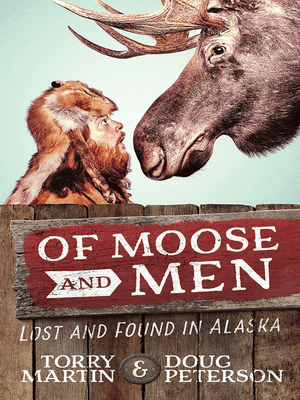
Of Moose and Men
Torry Martin, Doug Peterson
Torry Martin—a comedian, actor, and hippie—fled from California to the wilderness of Alaska, searching for answers to life’s big questions. He found what he was looking for…and a lot more!
A moose got its head stuck in Torry’s window. A reindeer was trapped in his kitchen. A bear almost prevented him from reaching his airplane. He once woke up frozen to his cabin floor.
Like the Israelites of old, Torry experienced plenty of miracles and mishaps in the wilderness. And like them, he came face-to-face with God and was changed forever.
Each of these true stories of Torry’s hilarious blunders and misfortunes contains a nugget of truth, but one theme prevails: If God can reclaim and repurpose Torry Martin’s life, He can do the same for you and those you love.

The Call of the Mild
Torry Martin, Doug Peterson
Responding to the Lion’s Roar
Join comedian, actor, and writer Torry Martin as he shares his latest outlandish misadventures!
Whether he’s dealing with pythons in South Africa, pickpockets in Ireland, or grizzlies in Alaska, Torry shares his blunders and the life lessons they’ve taught him along the way. Through each true story, he shares what he has learned about overcoming any obstacle that might hold us back from following God’s will—wherever He might lead.
Torry’s comical adventures will show you how to recognize, receive, and bravely respond to the Creator’s call for your life. His mishaps, mayhem, and madcap revelations prove that no matter how broken you might think you are, when you listen closely, you will hear God’s voice—roaring like a lion.

Daughters of the KGB
Douglas Boyd
After the guns fell silent in May 1945, the USSR resumed its clandestine warfare against the western democracies. Soviet dictator Josef Stalin installed secret police services in all the satellite countries of Central and Eastern Europe. Trained by his NKVD – a predecessor of the KGB – officers of the Polish UB, the Czech StB, the Hungarian AVO, Romania’s Securitate, Bulgaria’s KDS, Albania’s Sigurimi and the Stasi of the German Democratic Republic (GDR) spied on and ruthlessly repressed their fellow citizens on the Soviet model. When the resultant hatred exploded in uprisings – in GDR 1953, Hungary 1956 and Czechoslovakia 1968 – they were put down by brutality, bloodshed and Soviet tanks. What was at first not so obvious was that these state terror organisations were also designed for military and commercial espionage in the West, to conceal the real case officers in Moscow. Specially trained operatives undertook mokrye dyela or ‘wet jobs’, including assassination of émigrés and other anti-Soviet figures. Perhaps the most menacing were the sleepers who settled in the West, married and had children while waiting to strike against their host countries. Many of them are still among us. Here, historian and author Douglas Boyd explores for the first time the relationship between the KGB and its ghastly brood of ‘daughters’ – a true family from hell.
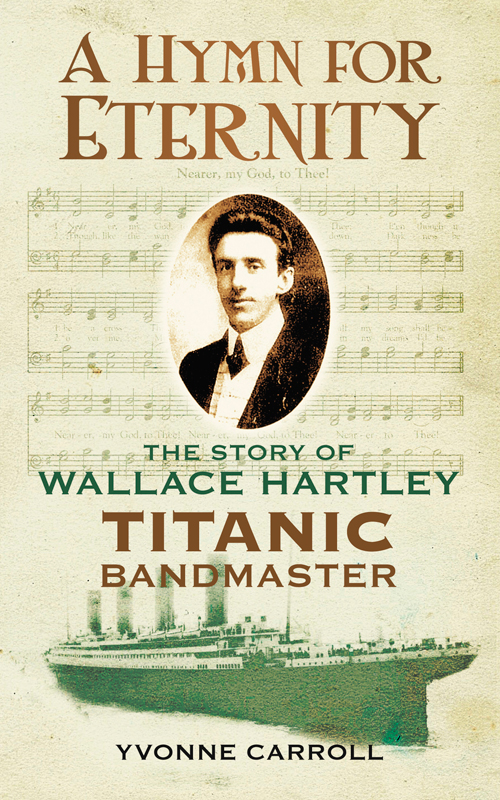
A Hymn for Eternity
Yvonne Carroll
The band playing ‘Nearer my God to Thee’ as the ship went down is probably one of the most famous stories relating to the Titanic. The bravery of the band and their leader, Wallace Hartley, is one of the endearing stories to come out of the worst disaster to happen to a British passenger liner. Who comprised the band? Who was Wallace Hartley and where did he come from?Not much has been written about this enigmatic band leader or of his part in the tragedy, beyond a few mentions in the many books on the disaster. But he was one of the most important characters in the story of Titanic. Yvonne Speak has spent years researching the life story of Wallace Hartley and has conducted interviews with remaining members of his family. Here she tells his story and remembers this most British of heroes.
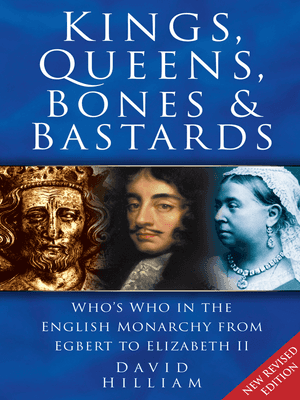
Kings, Queens, Bones and Bastards
David Hilliam
Who invented the "House of Windsor" as a royal name? Who founded Westminster Abbey? Which King had 21 illegitimate children? This engaging volume offers a continuous history of the English monarchy that shows how nine dynasties rose and fell, and uncovers the more unusual incidents of royal history. From Egbert—crowned in 802—to Elizabeth II, the histories of each monarch’s reign, as well as the extraordinary lives of their spouses, consorts, mistresses, and bastard children, are all addressed.

Raging Storm
Vannetta Chapman
In the Darkness, Anarchy Awakens
When a massive solar flare wiped out all modern technology across the globe, the small town of Abney, Texas, was thrown into chaos. Shelby Sparks and her teenage son, Carter, have found refuge, but Shelby knows she can’t simply remain hidden. Carter is a type 1 diabetic in need of insulin—and Shelby will risk her life traveling to Austin to make sure he gets it.
Shelby’s best friend and high school sweetheart, Max Berkman, won’t even consider letting her make the perilous journey alone. Together, they manage to reach the capital—only to discover that while things are desperate in Abney, Austin has turned into an urban nightmare on the brink of anarchy.
Shelby and Max’s search for medical supplies will lead them into terrifying territory, where the only thing more uncertain than finding what they need is the hope of making it out of the city alive.

Light of Dawn
Vannetta Chapman
Before Dawn, What Dangers Lurk in the Darkness?
For nine months, since a devastating solar flare caused a complete failure of the electrical grid, Shelby Sparks and her diabetic son, Carter, have been living at the ranch of Shelby’s high school sweetheart, Max Berkman.
Mostly insulated from the chaos surrounding them, Shelby and Max discover that the Texas government has fled the capitol and is barely maintaining control of the state. The governor needs volunteers to search for the new federal government, but no one knows exactly where it might be located—if it even still exists—or what perils await those brave enough to take on the mission.
Compelled by Carter’s desperate need for insulin and their God-given sense of duty, Shelby and Max answer the governor’s call and set out on a treacherous 600-mile journey, where they will experience the terrifying effects of unrestrained anarchy. If they have the faith and fortitude necessary to reach their destination, what will they find when they get there?
In this thrilling conclusion to the Remnant trilogy, America is left teetering between total collapse and the dawn of a new and vastly different reality.

Deep Shadows
Vannetta Chapman
All It Takes Is One Night to Plunge the World into Darkness
Life in Abney, Texas, is predictable and safe—until the night a massive solar flare wipes out all modern technology.
Shelby Sparks, novelist and single mom, had one goal: to provide for her diabetic son. In the wake of this global disaster, her mission hasn’t changed. Only now, medication is a priceless commodity and the future resembles an apocalyptic nightmare.
Max Berkman and Shelby were once sweethearts, but he lost his chance at claiming her love years ago. When the abrupt loss of power ushers him into a leadership role, he rises to the occasion. But his highest priority—to keep Shelby and her son safe—could prove to be the biggest challenge of all.
As the brilliant northern lights give way to deep shadows, Max and Shelby’s faith will be tested like never before. Only one rule remains: Find a way to survive.

The Song Weaver
B.J. Hoff
Bestselling author B.J. Hoff will delight readers as her unforgettable characters from A Distant Music and The Wind Harp reunite for a dramatic conclusion to The Mountain Song Legacy trilogy.
When a shadow falls over the MacAuley family, newlyweds Jonathan and Maggie Stuart find their faith and newly discovered happiness tested in unforeseen ways. An abrupt summons to return from their honeymoon wrenches them from the joy of their early days of marriage and thrusts them into the midst of a family in anguish.
Responsible for helping their loved ones heal, while maintaining and nurturing their own relationship and their love for each other, the young couple faces a challenge that will ultimately define their marriage and decide their future.

A Singular and Whimsical Problem
Rachel McMillan
Christmas, 1910. Merinda Herringford and Jem Watts would be enjoying the season a lot more if they weren’t forced to do their own laundry and cooking. Just as they are adapting to their trusty housekeeper’s ill-timed vacation, they are confronted by the strangest mystery they’ve encountered since they started their private investigation firm.
In this bonus e-only novella, what begins as the search for a missing cat leads to a rabble-rousing suffragette and the disappearance of several young women from St. Jerome’s Reformatory for Incorrigible Females. From the women’s courts of City Hall to Toronto’s seedy docks and into the cold heart of the underground shipping industry, this will be the most exciting Christmas the girls have had yet…if they can stay alive long enough to enjoy it.
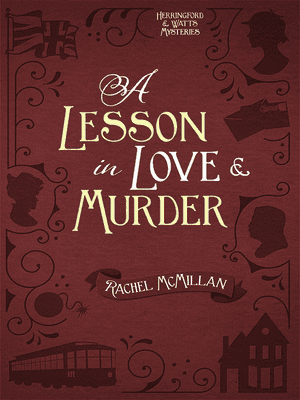
A Lesson in Love and Murder
Rachel McMillan
From political danger to personal drama, life is about to get explosive…
The legacy of literary icon Sherlock Holmes is alive and well in 1912 Canada, where best friends Merinda Herringford and Jem Watts continue to develop their skills as consulting detectives.
The city of Toronto has been thrown into upheaval by the arrival of radical anarchist Emma Goldman. Amid this political chaos, Benny Citrone of the Royal North-West Mounted Police arrives at Merinda and Jem’s flat, requesting assistance in locating his runaway cousin—a man with a deadly talent.
While Merinda eagerly accepts the case, she finds herself constantly butting heads—and hearts—with Benny. Meanwhile, Jem has her hands full with a husband who is determined to keep her out of harm’s way.
As Merinda and Jem close in on the danger they’ve tracked from Toronto to Chicago, they uncover a sinister plot to assassinate presidential candidate Theodore Roosevelt. Will they be able to save the day and resolve the troubles threatening their future happiness before it’s too late?
Independence, love, and lives are at stake in A Lesson in Love and Murder, the gripping second installment of the Herringford and Watts Mysteries series.